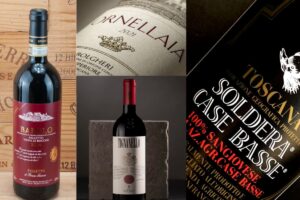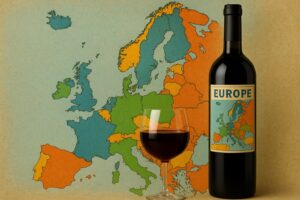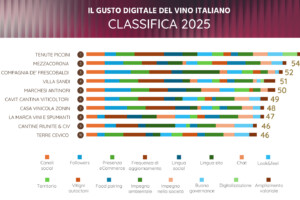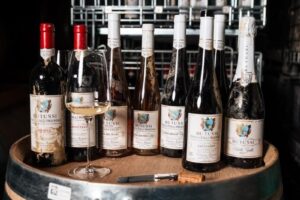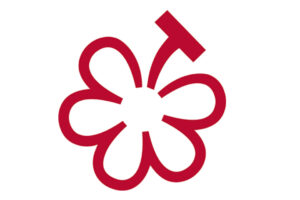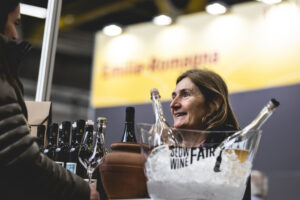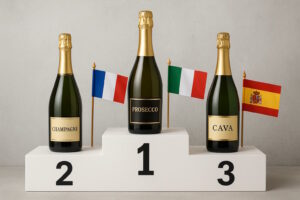Audio by winenews.tv:
Liv-ex is the main benchmark for fine wines. Everyone talks about it, but what are the wines and how does it work? We asked the creator and founder, James Miles.
We have often talked about Liv-ex, which measures the economic trend of the top quality wines in the world and is the most important benchmark for “fine wine” investments with its various indexes: from Liv-Ex 50 that considers only the 5 highest priced Bordeaux to the Liv-Ex 100 that takes into account production volume and the value of a wine. Italian wines though are only minimally represented in the Liv-Ex 100 (in November it fell 10%, even though in the long term it is still profitable) with Sassicaia 2006 and Ornelllaia 2004 at 0.3% on the index (updated to July 2011) while the French wines are 99.7%. James Miles, the founder of Liv-ex told Winenews that this situation could however change for the better to benefit the image of all Italian wines. “I think Italian winemakers are doing all the right things,” said Miles, “the Supertuscans are strong on the market today and the producers are making Bordeaux type wines, with the same blends, so I think Italy is bound to become more important. When the U.S. market ruled, there was great demand, especially in secondary markets (like auctions) for Italian wines. I think that in China - the leading market in fine wines that is growing in taste and consumer curiosity - there will be increased interest in wines like Sassicaia and Tingnanello because collectors will think that “these wines are sold at a tenth of a top Bordeaux, though the difference in quality is not proportional and then they will be more interested in those wines”.
One “problem” for the top Italian wines is that they are getting more and more popular, so production has to keep up. Bordeaux wines have the advantage that there are many more of them and it is not easy to plant new vineyards to produce more Chateaux La Fitte: this is an advantage on the market. It keeps supply always constant with the critical mass that is already large enough”.
Info: www.liv-ex.com
Focus – Liv-Ex explained to Winenews by its founder, James Miles.
In Italy we talk a lot about Liv-ex, could you explain to us exactly what it is? Liv-Ex is considered the main comparison measure (benchmark) for fine wines. It is mainly Bordeaux wines but other regions are also represented like Italy with Sassicaia and Tignanello vintages. So, Italy plays a role on the index but Italian wines represent a low percentage, mainly because Italian wines are produced in lower quantities than Bordeaux wines.
How do the various indexes work? Each one is different from the other. Liv-Ex 100 takes into account rarity and production, which means we calculate it multiplying production volume by the current price of the wine and then we also take into consideration how much aged wine is consumed and then if the availability of the wine diminishes over time. It is a reasonably scientific method.
The Liv-Ex 50 index has only the 5 highest priced Bordeaux wines and is based only on price. The components change each year so old vintages and recent ones of Bordeaux wines are together on the index. The advantage is that it allows us to price wines bought and sold every day, which is a big step ahead for the industry. What does your method mean for wine investors now and in the future? Our platform is b2b, so it is used by wine professionals and traders, but we believe in transparency so we publish our data on our website for consumers and we also have a product called “Cellar Watch”, which was specifically studied to give consumers information on what’s happing on the market, besides complete and transparent information on prices, so they can make knowledgeable decisions on which wines to choose for investments, and so on.
Concerning the future, I think there’s still a lot of work to be done, especially in the “post-trade” phase, like limiting moves that could damage the product. It’s a question of building better infrastructures, which Liv-ex is working on. Some say that the Asian market alone has pushed the price rise of Bordeaux wines, because on the “old” markets like the United States prices are going down: do you agree? What do you see for the future, is it a bubble, like some say, or a continuing trend? I think it is too easy to say every time an asset increases in price that it is a bubble. You always need two points of view to make a market. I think that as long as people continue keeping the portfolio “liquid” - a sentiment shared by many investors, since interest is now much lower than inflation in countries like the U.S., China, Europe and Great Britain – physical assets like wine, art, silver and gold become more attractive as a means to maintain one’s capital. As long as these conditions hold and as long as the Chinese market and the other emerging markets continue to respond to the global economy, the dynamic of “fine wines” will continue, because the growth we’re seeing on emerging markets comes from an enormous number of well-to-do people that want to show off how rich they are by buying Ferraris, Gucci shoes or “fine wines”, which is a way to celebrate their new richness.
Copyright © 2000/2025
Contatti: info@winenews.it
Seguici anche su Twitter: @WineNewsIt
Seguici anche su Facebook: @winenewsit
Questo articolo è tratto dall'archivio di WineNews - Tutti i diritti riservati - Copyright © 2000/2025











